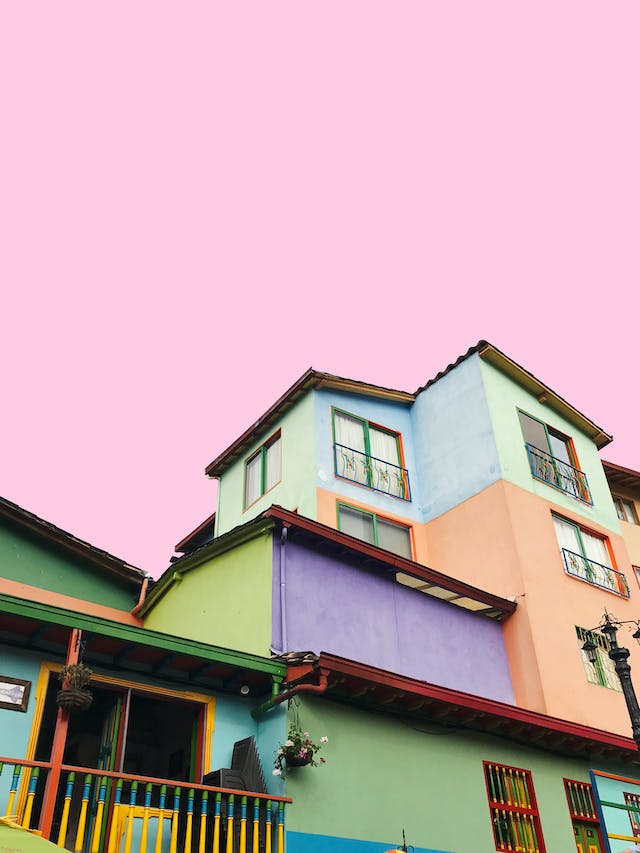When looking for rental properties, you look for the essentials, for what is ready and works for you right now. Is there enough living room or dining room space for you and your roommates to have people over for the bi-weekly Dungeons and Dragons game? Is there enough bedrooms for you and your partner and your two children who visit on weekends?
It is a completely different prospect to buying a property, which has to have some sense of a future, of potential – the attic space to convert, the walls to knock through to create an open-plan feel, the long garden space for the children to roam. It is a privilege to make whatever you live in feel like your own. Money and time allow for such personalisation.
This, though, kind of personalization isn’t exclusive to home owners. You might, though, have found a rental place that has some extra space, even a whole extra room. You might not have enough furniture to fill the space or you might have too much for a space.
There are things you can do! You can make the rental feel like home. You can maximise the space you have. You do not need to own a property for it to be yours. Here are some ideas.
Spare Rooms
As mentioned, with rentals, people will look for the fundamentals. They want the essentials covered: three bedrooms, a long garden, and/or close as possible to transport links. Therefore, extras are often by-products, accidental perks. Whole spare rooms, which you’ll have ideas for but maybe won’t get the focus of your attention because it’s superfluous, and “it’s only a rental”.
Spare rooms are great. Even if you don’t necessarily need them for anything extra – like an office or a workout space for a Peloton which President Biden is struggling to include in the White House – they can be used to alleviate some of the burden on well-used rooms.
For instance, you could use a spare room as a dresser. If you transfer a wardrobe from the master bedroom into the spare, then you create a bit more space in the one room as well as create more room for yourself in the spare.
Using spare rooms as something new and separate, like an office or workout space, is reasonable too. This extra can add a new dimension to your domestic or work routine – especially in light on spending more and more time at home. You can lay a Persian rug down with that mid-century desk you’ve had your eye on centred on it, and then shut it away at the end of the day, creating that separation for a healthier lifestyle.
Using One Room as Two
Say you’ve had to downsize from your last place because you’ve got a new job in the city and being closer to those integral transport links was more essential than the extra space. You’re having to really use the space you have by being creative with storage and dense with your layout of furniture, hoping for the best with the room’s feng shui: that expensive PC gaming set-up is awkwardly positioned in your master bedroom, leaving you with little floor or maneuvering space.
This can all be internalized as part of the “sacrifice” of moving into this place for that new job. You shouldn’t lean into the sacrifice, though. There are things to relieve the sense of a negative compromise.
Additionally, an important note here is insurance. The PC set-up is possibly in at a higher risk of being a victim of an accident if you’re using a two-for-one room: if it’s in your living room, then a drink might be spilt on it if you’re walking by it or if there’s more traffic passing it then the monitor might be knocked – the accidents that happen are crazy when spelt out but still plausible. Ensuring your apartment renters insurance covers these premium items will give you a greater peace of mind.
You create a sense of space. Often, colours and pattern design will go a long way to promoting this. Having a consistent design which revolves around a couple of colours – calmer ones will be best as you’ll have a lot of furniture or function going on in this/these rooms – can really create cohesion. Natural light does this well too, but this isn’t necessarily something you as a renter can affect. This same idea is often applied to make single-function, small rooms feel bigger.
Another trick is to create clear sightlines and walkways. It’s difficult to do in small spaces, but focus on what space you want available and try to design around this because it can help, naturally, to section areas off and keep them concise. Multi-purpose furniture – desks which have drawers space for clothes, for instance – work well for this idea too, allowing for a more amorphous feel.
Verticality
Lots of furniture tends to be horizontal. It takes up floor space. Depending on budget and the time up anticipate spending that rental, it could be worth looking at more vertical furniture: bookcases that go up, not out, for instance. It’s a fine line, though, as too many towering pieces will potentially block valuable natural light. Use them in appropriate places to create floor space.

